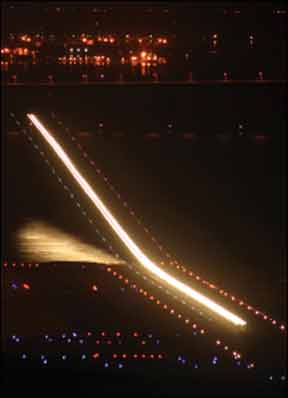With 200 hours and my VFR-only private ticket, I felt confident about the day’s flight. I was taking off at 0500 with the small airport at Uvalde, Texas, as my destination. Weather and everything else looked pretty good for the 1.5-hour hop, with scattered clouds and a higher broken layer above.

288
I enjoy departing the Houston area under cover of darkness and watching the city come alive from the air. The sky was clear and smooth as I made my way toward Uvalde, where my planned landing also would be under cover of darkness. As I approached San Antonio, I could see some clouds obscuring my view of the city lights, but I was still able to maintain VFR.
My anxiety began to increase slightly as I realized the sunrise that would allow me to better see and avoid the scattered clouds was still an hour away. What made it worse was the lack of lights on the ground in this part of Texas, where homes and small towns were widely scattered across the vast countryside.
There was another factor: In my haste to get an early start, I left with half tanks, which technically provided adequate fuel to get me to my destination plus a healthy reserve, but remained in my mind as not ideal heading into remote country and a landing under darkness.
As I made my final descent into Uvalde, my left tank’s low fuel annunciator sounded, even though I had adequate fuel in the opposite tank. That, along with the controller saying, “Airport is 18 miles at 12 o’clock, switch to advisory frequency, squawk VFR, good day,” left me with a sense of urgency and feeling alone.
Those last 18 miles seemingly took forever. With my fuel light still on, the Uvalde city lights finally penetrated up through the scattered and broken cloud layer to my relief. I made a beeline toward the lights, watching my GPS for confirmation of the airport’s location. As I descended through a hole in the cloud layer, I could see the runway lit up like a Christmas tree. I landed safely and began thinking about what I’d do differently next time.
Departing with maximum fuel was number one. Departing later to ensure a daylight landing at an unfamiliar, remote airport would have been a good choice. Requesting vectors to the airport was another. Finally, planning my flight more effectively and perhaps leaving the day before would have made things much easier.
—Scott from Houston




